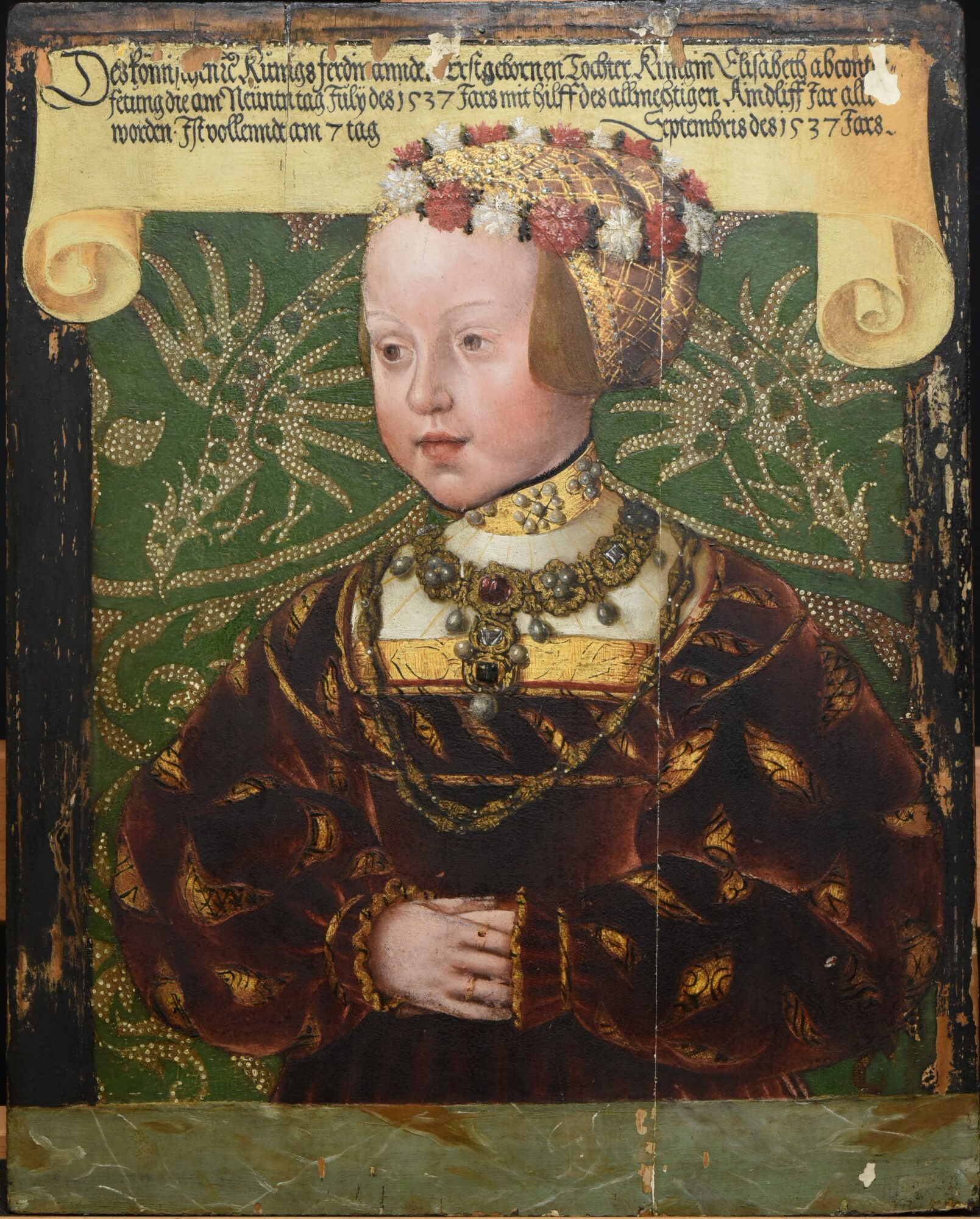The Restoration of Archduke Maximilian and Archduchess Elisabeth’s Portraits
Paris-based paintings conservator Perrine de Fontenay, has been a fellow at The Phoebus Foundation for the past three months. Her focus during this period has been on the conservation of paintings from our collection of Latin-American art of the colonial period and our old masters collection. One of her most notable contributions involves working together with paintings conservator Sofia Hennen on two paintings by Jakob Seisenegger (1505 – 1567) depicting the siblings Archduke Maximilian (1527 – 1576) and Archduchess Elisabeth (1526 – 1545).
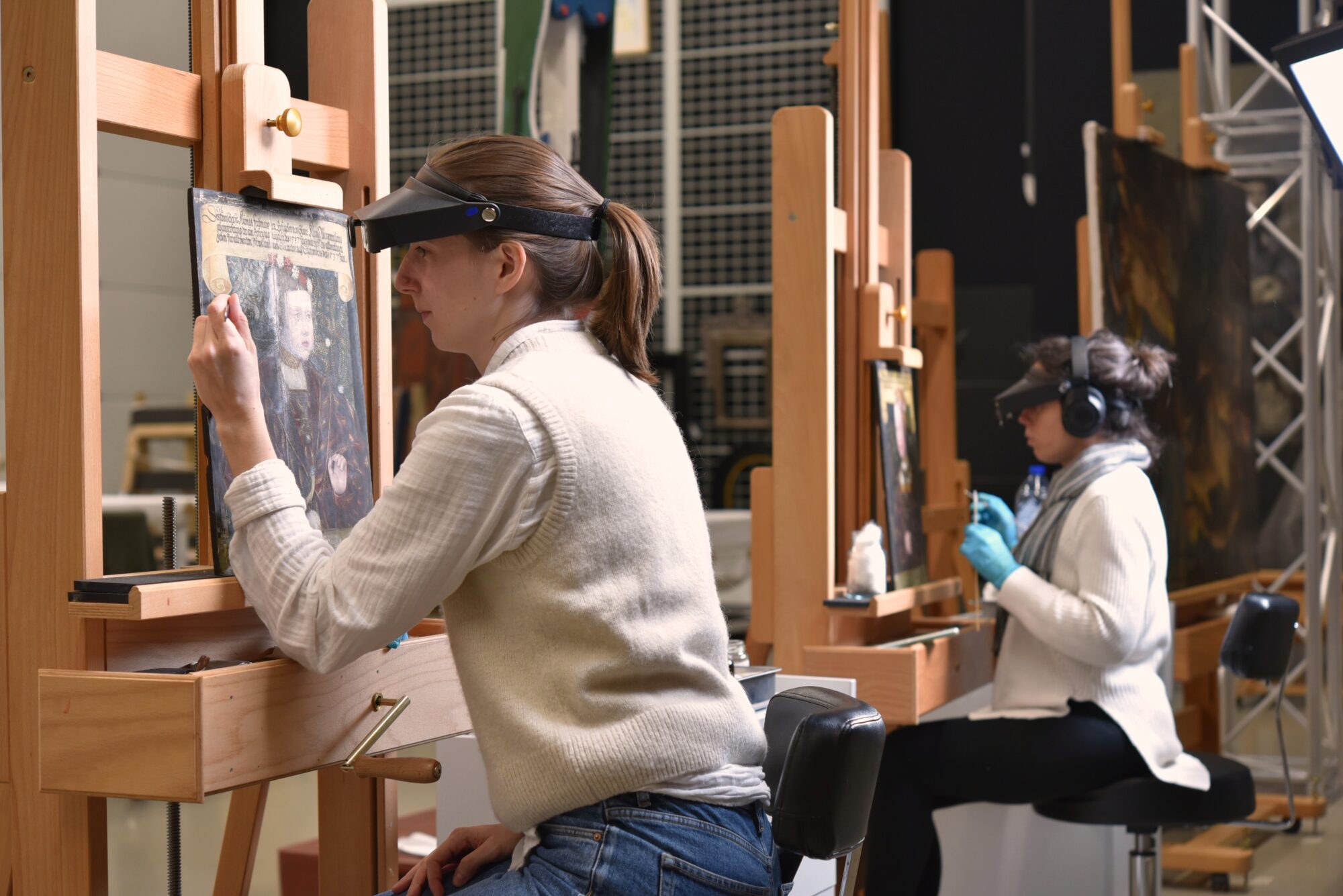
For the past few months, a long process of painstakingly removing old overpaint has been carried out in order to unveil the original, colourful background intended by the artist.

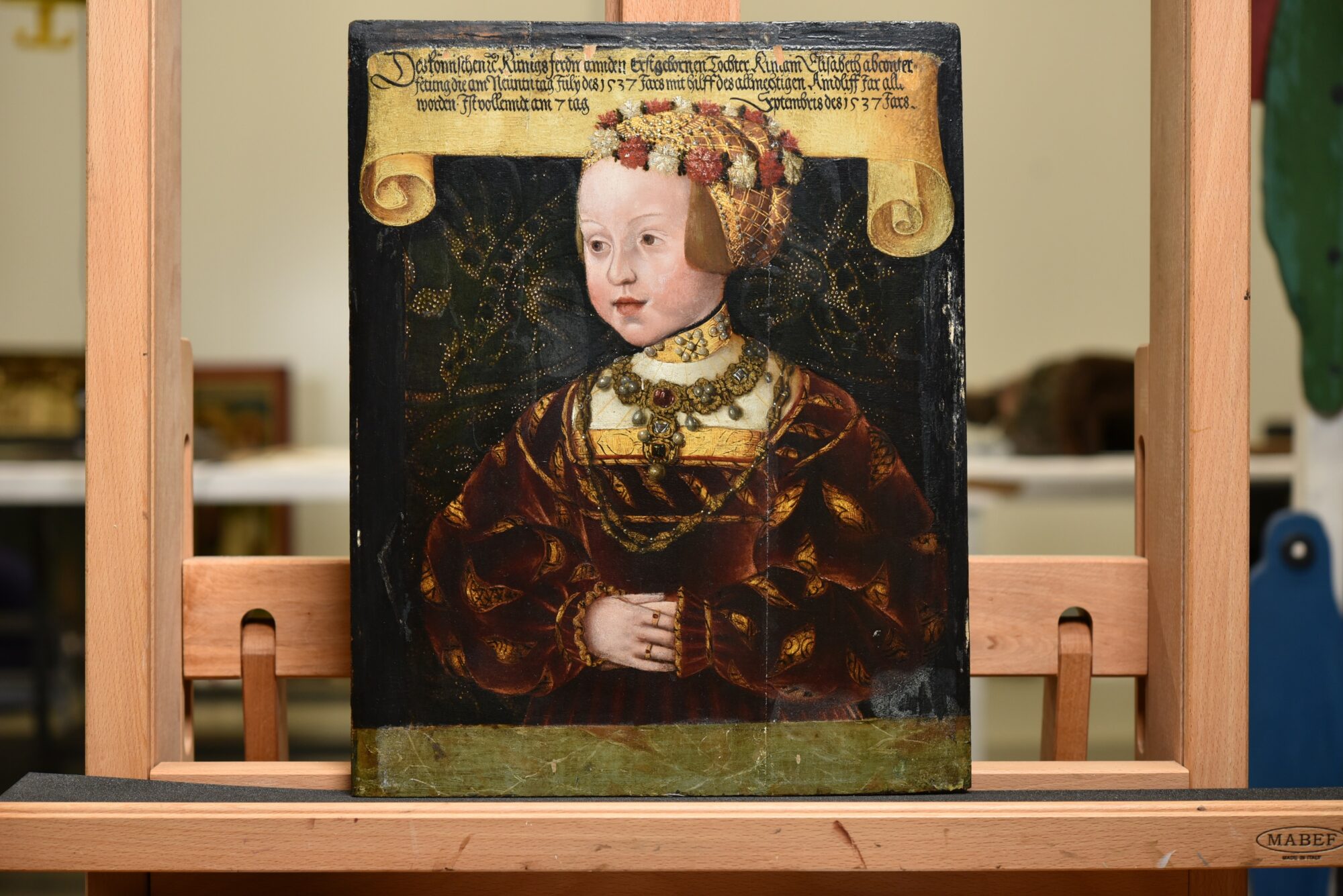
Jakob Seisenegger (1505 – 1567) painted the portraits in 1537, depicting the siblings Archduke Maximilian (1527 – 1576) and Archduchess Elisabeth (1526 – 1545) at the ages of 10 and 11, respectively. These oil paintings on linden or poplar panels showcase the children adorned in luxurious clothing embellished with jewels and flowers in their hair. The attire and jewels are detailed with gold accents. Both figures are positioned behind a green marble ledge. Initially, the backgrounds were dark brown-black, but in some areas, traces of a colourful layer beneath were revealed after removing oxidized varnishes and tinted layers.
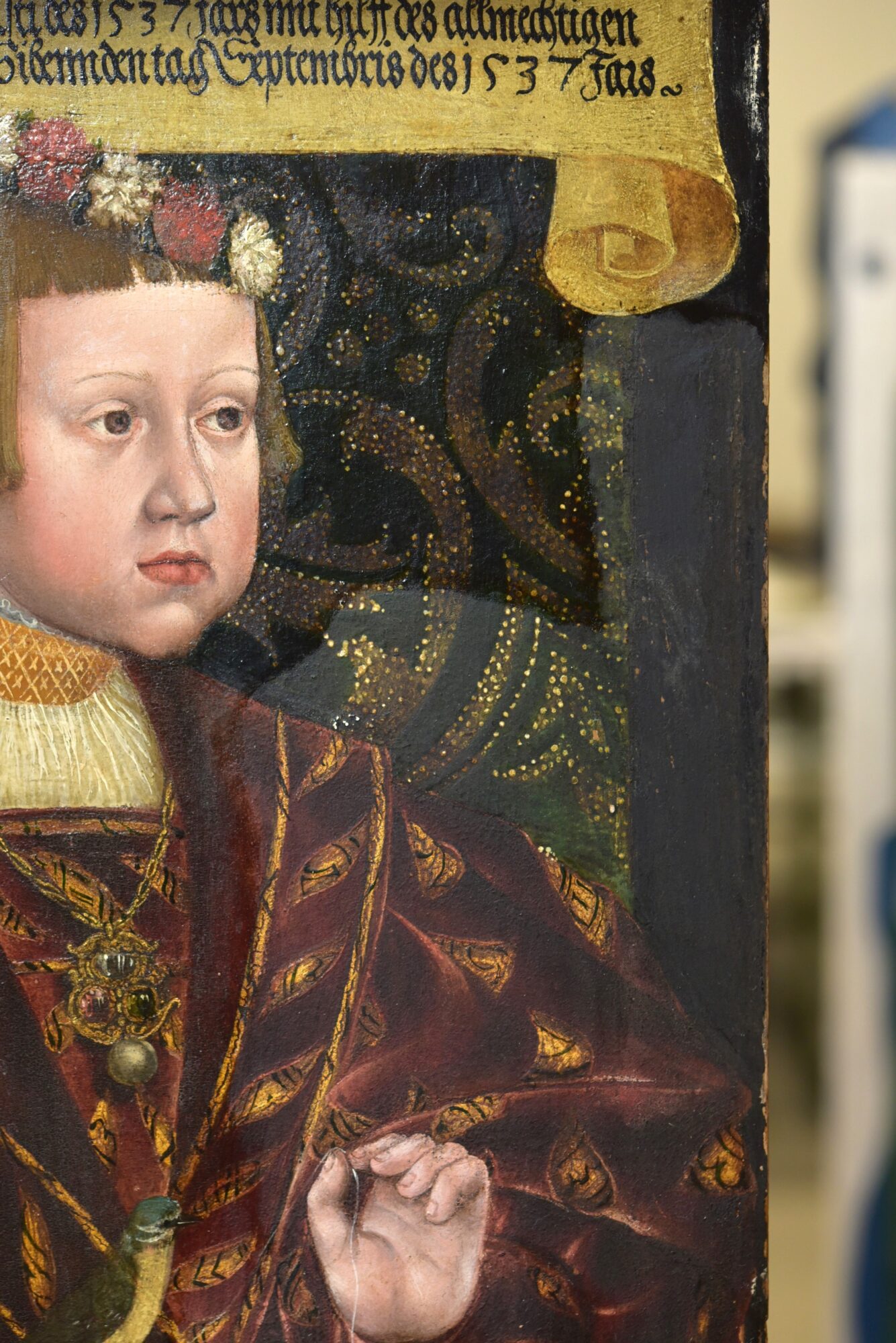
As the court-appointed painter to Ferdinand I, Seisenegger created numerous portraits of the children and other members of the Habsburg court. His artistic skills were highly sought after at the time. Receipts related to Seisenegger’s first commissions from Ferdinand I have been discovered, revealing the artist’s meticulous approach in selecting and preparing the panels for portraiture (Borchert, 2021). Similar to many painters of his era, Seisenegger maintained stringent standards for the materials that he worked with.
Since their creation, these portraits have undergone some alterations and have been subject to several previous restoration interventions before being entrusted to the care of Sofia and Perrine here at the conservation studio.
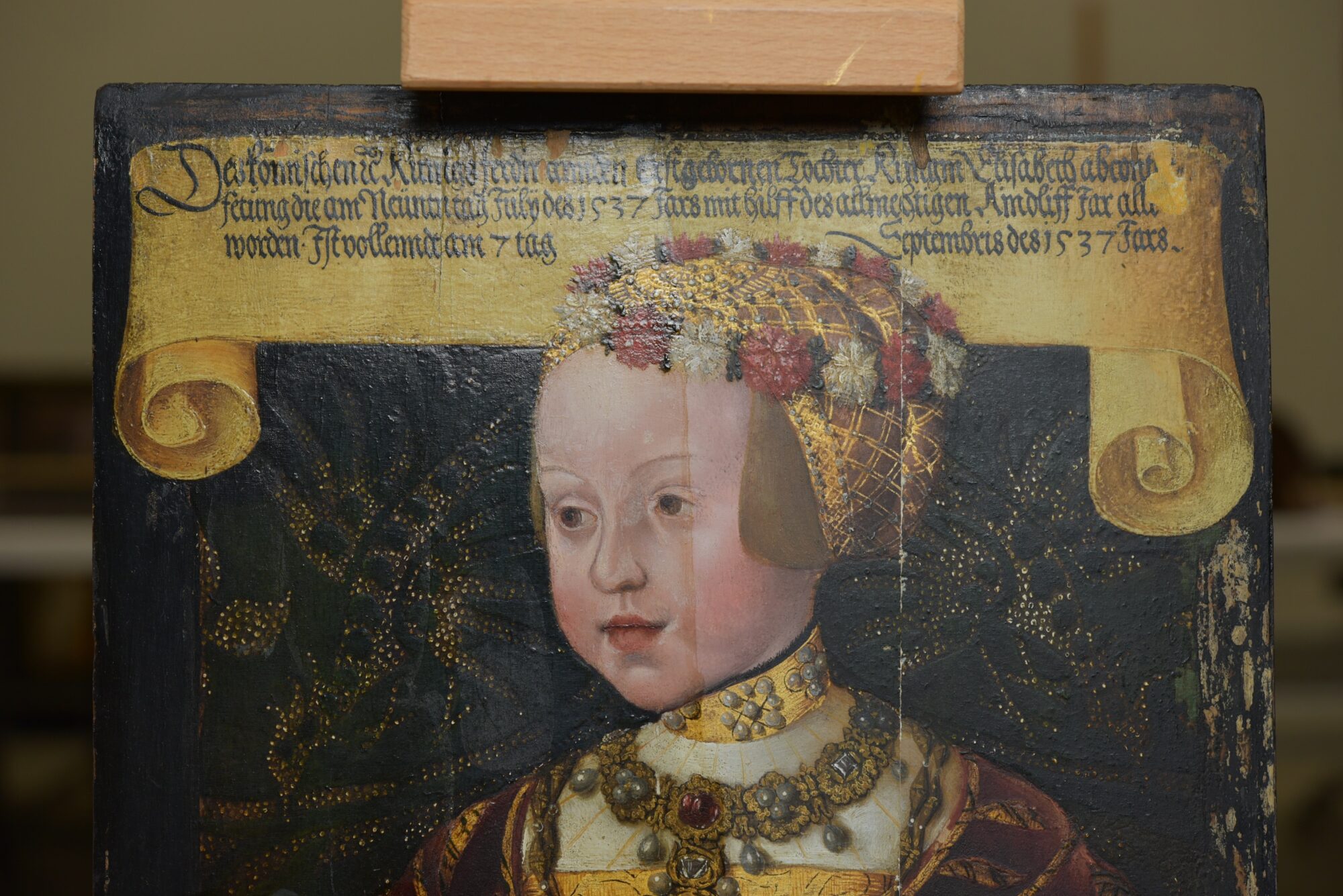
The portraits were carefully studied upon arrival to establish a general overview of their condition and the previous restoration campaigns they had undergone. Through observations in natural light and UV reflectance, testing, and comparisons with other portraits by Seisenegger, it was determined that the original green and gold brocade of the background was concealed beneath a darkened accumulation of old varnishes, non-original glazes, and greenish overpaint. The overpainting might have been done with the intent of unifying uneven or overly cleaned paint. Another possibility is that the overpaint was an aesthetic choice following a trend. Similar examples of portraits from the same period with brightly coloured backgrounds hidden by non-original layers and overpaint can also be found.

Previous interventions, potentially dating back to the 19th century, were also identified in the panel structures. The planks were split, their joints planed down and subsequently rejoined with wooden half-lap insertions. This was likely done in an attempt to flatten the natural curvature of the wooden panels. The intervention is notably apparent in the portrait of the Archduchess, resulting in a loss of a few millimetres from the top to the bottom of the panel, extending vertically across the entire composition.
It was decided to focus the restoration of the panels primarily on the varnish and paint layers. A structural intervention aimed at correcting the discrepancy in the composition of the Archduchess’s portrait was deemed too risky. Following meticulous testing, the numerous layers of varnish, non-original glazes, and overpaint were gradually cleaned and softened using solvent gels, enabling their mechanical removal with scalpels. Though a time-consuming process, the results were rewarding as the beautiful hidden details finally emerged. Fortunately, aside from the edges, the original paint layer underneath was well-preserved, revealing a luxurious green-and-gold brocade.
